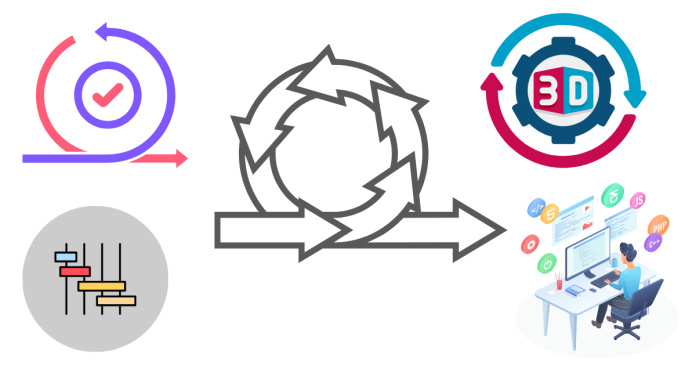The Iterative Model is a software development approach where the software is developed and refined through repeated cycles (iterations). Instead of building the entire software in one go, the development is broken into smaller, manageable segments, allowing for continuous improvements based on feedback.
This model emphasizes adaptability and allows developers to refine and enhance the software in stages, making it an excellent choice for projects where requirements may evolve over time.
Key Features of the Iterative Model
- Incremental Development: The software is built in small portions, with each iteration delivering a working version of the product.
- Feedback-Driven: Changes and improvements are based on user or stakeholder feedback from previous iterations.
- Risk Management: Risks are identified and addressed early in the process, reducing the chance of project failure.
- Flexibility: The model accommodates changing requirements, making it suitable for dynamic projects.
How the Iterative Model Works
The development process in the Iterative Model involves the following steps:
1. Initial Planning
- The project requirements are gathered and analyzed.
- A basic version of the software, called the initial prototype, is planned.
2. Iteration Design
- The software is divided into smaller components or modules.
- Each module is designed and planned for development in an iterative cycle.
3. Development and Testing
- During each iteration, the planned module is developed, coded, and tested.
- Testing ensures that any errors or bugs are resolved before moving to the next iteration.
4. Evaluation and Feedback
- Stakeholders or users review the developed iteration and provide feedback.
- Necessary changes or improvements are implemented in the next iteration.
5. Repeat
- The process repeats until the software meets the desired requirements and quality standards.
Advantages of the Iterative Model
- Early Feedback: Stakeholders can see working versions of the software early in the development process.
- Reduced Risks: Identifying and addressing issues in early iterations reduces the risk of major failures.
- Adaptability: Accommodates changes in requirements without disrupting the entire project.
- Improved Quality: Regular testing and feedback help improve the software’s functionality and user experience.
- Partial Deliveries: Even if the complete project is not finished, usable portions of the software are delivered in each iteration.
Disadvantages of the Iterative Model
- Complex Management: Managing multiple iterations can be challenging and time-consuming.
- Increased Costs: Repeated cycles of design, testing, and feedback may increase overall project costs.
- Dependency on Feedback: Delays in user feedback can slow down progress.
- Scope Creep: Frequent changes in requirements may lead to scope creep, complicating the development process.
Use Cases of the Iterative Model
The Iterative Model is suitable for:
- Projects with evolving requirements.
- Large and complex systems that need phased development.
- Projects with high-risk factors that require early detection and resolution.
- Software where frequent updates or enhancements are expected.
Examples:
- Developing mobile or web applications.
- Building large-scale enterprise systems.
- Creating software with frequent updates, such as games or social media platforms.
Comparison with Other Models
| Aspect | Iterative Model | Waterfall Model | Agile Model |
|---|---|---|---|
| Development Process | Repeated cycles with feedback | Linear and sequential | Flexible, iterative, and collaborative |
| Flexibility | High, allows changes in each iteration | Low, rigid structure | Very high, constant adaptability |
| Risk Management | Early risk detection and resolution | Risks detected late in development | Continuous risk assessment and mitigation |
| Deliverables | Partial working software in each iteration | Delivered at the end of the project | Frequent, smaller deliverables |
The Iterative Model is a powerful and flexible approach to software development, especially for projects with changing requirements or when early feedback is essential. By focusing on incremental improvements, this model ensures that the final product is both functional and aligned with user expectations. While it may require more resources and management, the benefits of adaptability, reduced risks, and improved quality make it a preferred choice in many modern software development scenarios.


